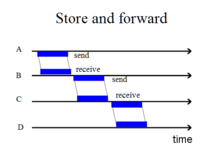Circuit switching is a method of implementing a telecommunications network in which two network nodes establish a dedicated communications channel (circuit) through the network before the nodes may communicate. The circuit guarantees the full bandwidth of the channel and remains connected for the duration of the communication session. The circuit functions as if the nodes were physically connected as with an electrical circuit.
A datagram is a basic transfer unit associated with a packet-switched network. Datagrams are typically structured in header and payload sections. Datagrams provide a connectionless communication service across a packet-switched network. The delivery, arrival time, and order of arrival of datagrams need not be guaranteed by the network.
In telecommunications, packet switching is a method of grouping data into packets that are transmitted over a digital network. Packets are made of a header and a payload. Data in the header is used by networking hardware to direct the packet to its destination, where the payload is extracted and used by an operating system, application software, or higher layer protocols. Packet switching is the primary basis for data communications in computer networks worldwide.

Queueing theory is the mathematical study of waiting lines, or queues. A queueing model is constructed so that queue lengths and waiting time can be predicted. Queueing theory is generally considered a branch of operations research because the results are often used when making business decisions about the resources needed to provide a service.
Wormhole flow control, also called wormhole switching or wormhole routing, is a system of simple flow control in computer networking based on known fixed links. It is a subset of flow control methods called Flit-Buffer Flow Control.

The Advanced Research Projects Agency Network (ARPANET) was the first wide-area packet-switched network with distributed control and one of the first computer networks to implement the TCP/IP protocol suite. Both technologies became the technical foundation of the Internet. The ARPANET was established by the Advanced Research Projects Agency (ARPA) of the United States Department of Defense.
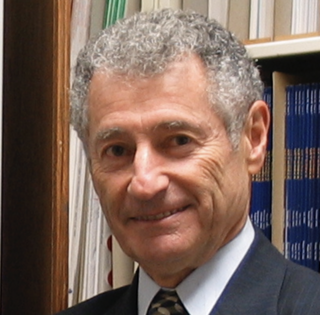
Leonard Kleinrock is an American computer scientist and Internet pioneer. He is Distinguished Professor Emeritus of Computer Science at UCLA's Henry Samueli School of Engineering and Applied Science.
Store and forward is a telecommunications technique in which information is sent to an intermediate station where it is kept and sent at a later time to the final destination or to another intermediate station. The intermediate station, or node in a networking context, verifies the integrity of the message before forwarding it. In general, this technique is used in networks with intermittent connectivity, especially in the wilderness or environments requiring high mobility. It may also be preferable in situations when there are long delays in transmission and error rates are variable and high, or if a direct, end-to-end connection is not available.
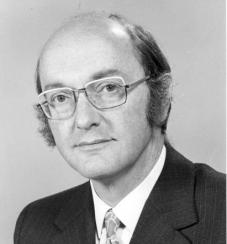
Donald Watts Davies, was a Welsh computer scientist who was employed at the UK National Physical Laboratory (NPL).
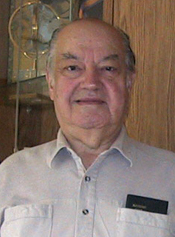
Paul Baran was an American-Jewish engineer who was a pioneer in the development of computer networks. He was one of the two independent inventors of packet switching, which is today the dominant basis for data communications in computer networks worldwide, and went on to start several companies and develop other technologies that are an essential part of modern digital communication.
In telecommunications and computer networking, connection-oriented communication is a communication protocol where a communication session or a semi-permanent connection is established before any useful data can be transferred. The established connection ensures that data is delivered in the correct order to the upper communication layer. The alternative is called connectionless communication, such as the datagram mode communication used by Internet Protocol (IP) and User Datagram Protocol (UDP), where data may be delivered out of order, since different network packets are routed independently and may be delivered over different paths.

The Interface Message Processor (IMP) was the packet switching node used to interconnect participant networks to the ARPANET from the late 1960s to 1989. It was the first generation of gateways, which are known today as routers. An IMP was a ruggedized Honeywell DDP-516 minicomputer with special-purpose interfaces and software. In later years the IMPs were made from the non-ruggedized Honeywell 316 which could handle two-thirds of the communication traffic at approximately one-half the cost. An IMP requires the connection to a host computer via a special bit-serial interface, defined in BBN Report 1822. The IMP software and the ARPA network communications protocol running on the IMPs was discussed in RFC 1, the first of a series of standardization documents published by what later became the Internet Engineering Task Force (IETF).
Packet loss occurs when one or more packets of data travelling across a computer network fail to reach their destination. Packet loss is either caused by errors in data transmission, typically across wireless networks, or network congestion. Packet loss is measured as a percentage of packets lost with respect to packets sent.

Lawrence Gilman Roberts was an American engineer who received the Draper Prize in 2001 "for the development of the Internet", and the Principe de Asturias Award in 2002.

A computer network is a set of computers sharing resources located on or provided by network nodes. Computers use common communication protocols over digital interconnections to communicate with each other. These interconnections are made up of telecommunication network technologies based on physically wired, optical, and wireless radio-frequency methods that may be arranged in a variety of network topologies.
IEEE Internet Award is a Technical Field Award established by the IEEE in June 1999. The award is sponsored by Nokia Corporation. It may be presented annually to an individual or up to three recipients, for exceptional contributions to the advancement of Internet technology for network architecture, mobility and/or end-use applications. Awardees receive a bronze medal, certificate, and honorarium.
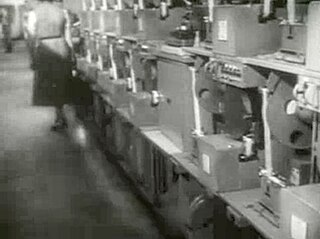
Automatic Telegraph Switching System Plan 55-A was one in a series of store and forward message switching systems developed by Western Union and used from 1948 to 1976 for processing telegrams. It is an automated successor to Plan 51, which commenced service in 1951 in a nationwide network of the U.S. Air Force, but required semi-automatic operation.
The Symposium on Operating Systems Principles (SOSP), organized by the Association for Computing Machinery (ACM), is one of the most prestigious single-track academic conferences on operating systems.

The NPL network, or NPL Data Communications Network, was a local area computer network operated by a team from the National Physical Laboratory (NPL) in London that pioneered the concept of packet switching.
The Protocol Wars were a long-running debate in computer science that occurred from the 1970s to the 1990s, when engineers, organizations and nations became polarized over the issue of which communication protocol would result in the best and most robust networks. This culminated in the Internet–OSI Standards War in the 1980s and early 1990s, which was ultimately "won" by the Internet protocol suite (TCP/IP) by the mid-1990s when it became the dominant protocol through rapid adoption of the Internet.
